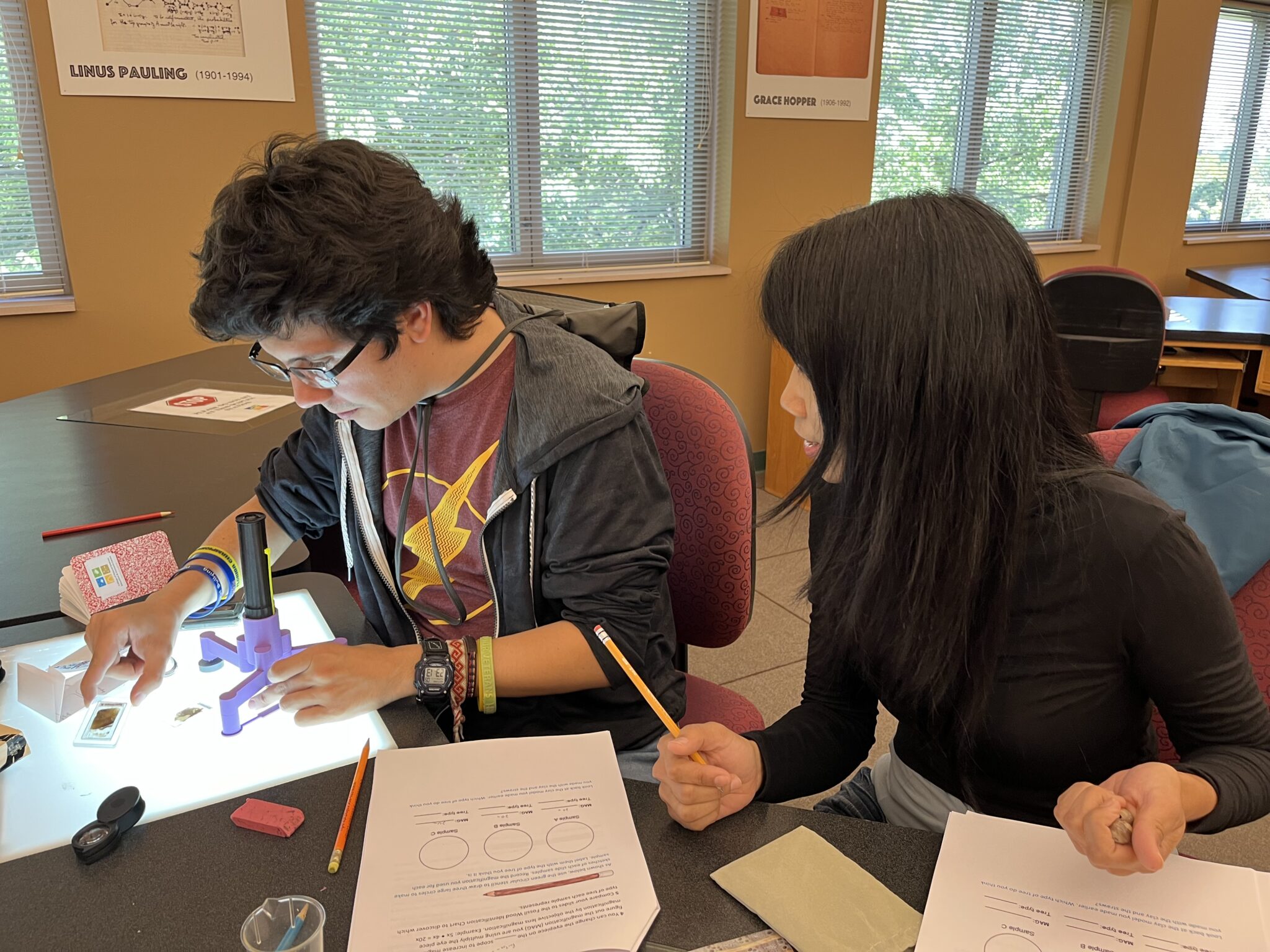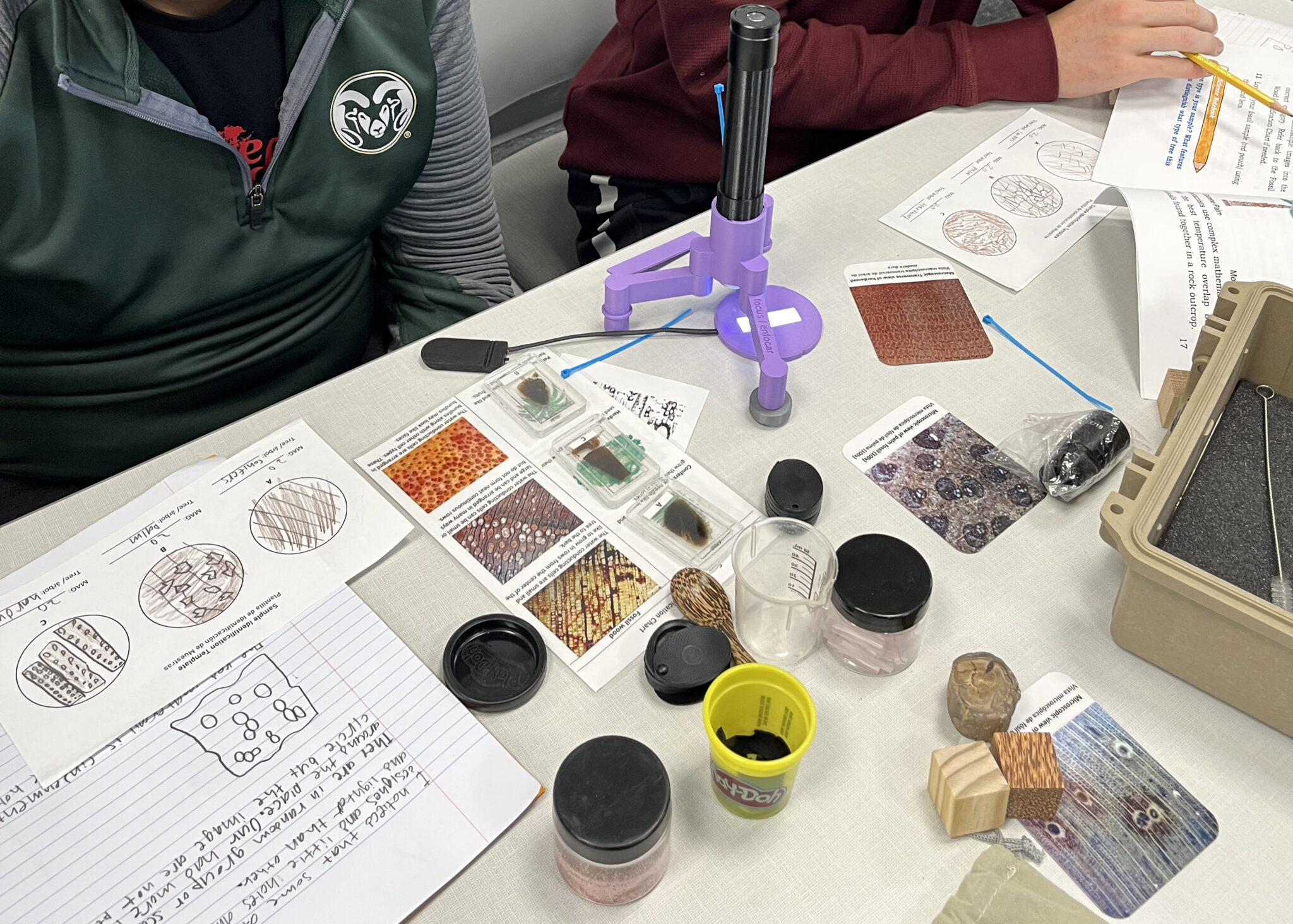
The College of Natural Sciences Education and Outreach Center (NSEOC) at Colorado State University is a key contributor on an interdisciplinary project, “Rediscovering America’s Forgotten Fossil Forests and Inspiring the Next Generation of Paleobotanists,” funded by the National Geographic Society’s Meridian Grant Program.
The project brings together scientists, conservationists, educators and storytellers to create an immersive learning experience. The four main components of the Meridian Grant are research, educational outreach, community engagement and storytelling. The NSEOC is integrated into the research, education, and community engagement components of the grant and has translated the project’s research into a new hands-on STEM kit to be used by schools in Colorado and Wyoming.
The STEM kit not only aims to educate but also inspire, with the goal of fostering a human-land connection among local students and nurturing the next generation of scientists.
Research
The research part of the grant focuses on studying petrified wood from southwestern Wyoming dating back to the Eocene Epoch (41 to 50 million years ago). Some fossil wood sites in Wyoming have never been scientifically studied. The research involves visiting museum collections like those at Harvard and the Smithsonian Institution to examine their collections of fossilized wood from these areas, as well as visiting the field sites themselves.
By cutting thin sections of this fossil wood and identifying its characteristics, researchers on the “Rediscovering Fossil Forests” team, which administered the grant, aim to gain insights into the ancient paleo environment and climate that existed in what is now Wyoming during that time. This work is then translated by the NSEOC into hands-on STEM kits used by 4th-12th grade students.
Education
 The educational outreach component of the project involves developing STEM kits structured into four or five activities lasting about two hours. These kits are designed to allow students to independently navigate through the activities, while teachers serve as facilitators. Initial feedback suggests that students from local schools in Colorado and Wyoming found these kits highly engaging.
The educational outreach component of the project involves developing STEM kits structured into four or five activities lasting about two hours. These kits are designed to allow students to independently navigate through the activities, while teachers serve as facilitators. Initial feedback suggests that students from local schools in Colorado and Wyoming found these kits highly engaging.
Community engagement
The community engagement aspect of the project is a significant focus, particularly in collaboration with Wyoming Indian High School on the Wind River Reservation. This effort extends to a summer enrichment program designed for high school students to learn about the geology of their area and its geo-heritage. Geo-heritage describes geologic sites with significant scientific, educational, cultural or aesthetic value.
“I did some field research with the high school students this summer where they were learning to identify fossil wood and see that it’s a palm, or hardwood, or a conifer, which was pretty cool to them because the environment is dry and treeless,” said Mike Viney, a teacher in residence at the NSEOC and lead developer of this STEM kit.
This helped the students visualize the subtropical environment that existed in Wyoming 50 million years ago, which is starkly different from the arid landscape they see today, filled with sagebrush and bunchgrass.
Storytelling
The project also incorporates storytelling as a crucial component, with National Geographic storytellers playing a key role. Two photographers are involved in documenting various aspects of the project.
“[The storytelling] component is seen as a significant form of equity, particularly in relation to the concept of geo-heritage,” said Viney. The community engagement and storytelling aspects are closely intertwined, contributing to a deeper understanding and appreciation of geo-heritage as local students study the history of the land they’ve grown up on.
A notable feature of this project is its multilingual approach and international scope. There are partners from Thailand, the United States, the United Kingdom, Indonesia and Latin America working on this project.
“This is going to be the most international multilingual kit that we’ve ever had,” said Viney. The STEM kit is truly unique in that it is the first paleobotany kit that focuses on fossil wood to exist. This inclusivity is further underscored by the involvement of paleobotanist Nareerat Boonchai, a National Geographic Explorer and project lead , whose global initiatives could extend the kit’s impact far beyond local boundaries.
The NSEOC’s “Rediscovering America’s Forgotten Fossil Forests” STEM kit, funded by a National Geographic Meridian Grant, is weaving together the power of research, community engagement, educational outreach and storytelling, hoping to inspire the next generation of scientists and beyond.